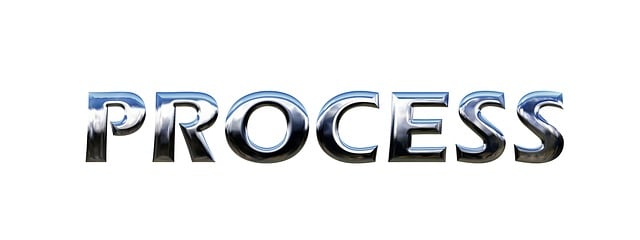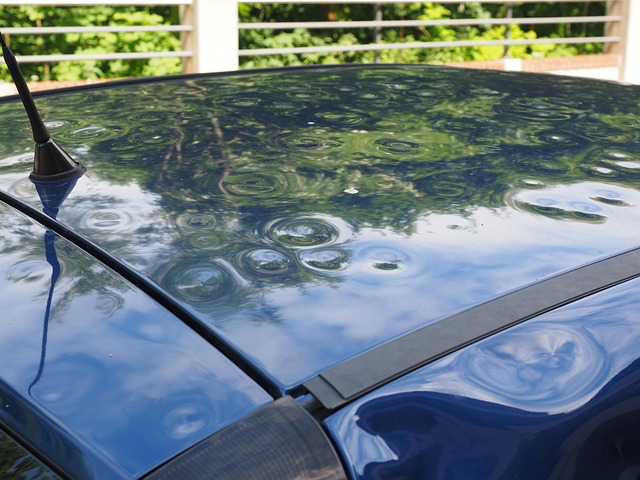Precision Electric Car Body Repair: Unlocking Industry Sustainability
Electric car body repair poses unique challenges due to intricate power systems, high-voltage compon…….
In the rapidly evolving automotive landscape, electric cars have emerged as a game-changer, offering sustainable transportation and a reduced carbon footprint. As the adoption of electric vehicles (EVs) accelerates worldwide, the need for specialized body repair services has become increasingly crucial. Electric car body repair is a precise and intricate process that requires a unique skill set and a deep understanding of both traditional automotive mechanics and advanced electrical systems. This comprehensive article aims to explore every facet of this specialized field, from its foundational knowledge to emerging trends, technological innovations, and the global impact it is having on the automotive industry.
Definition: Electric car body repair refers to the specialized process of restoring and maintaining the structural integrity and aesthetic appeal of electric vehicles (EVs). It involves the unique challenges of repairing or replacing damaged body panels, frames, and components while ensuring the electrical systems remain safe, functional, and in compliance with regulatory standards.
Core Components: The primary focus of this repair process is on the physical structure of the EV, which includes:
Body Panels: These are the exterior and interior sheets that make up the vehicle’s shape and protect its structural framework. Common body panels include doors, fenders, hoods, trunks, and various interior components.
Frame and Chassis: The skeletal frame of an EV supports all other components and ensures structural integrity during collisions or repairs. It is crucial to maintain the precision and alignment of the frame to ensure optimal vehicle performance and safety.
Electrical Systems: EVs have complex electrical architectures, including batteries, power electronics, motors, and associated wiring harnesses. Body repair technicians must address any damage to these systems while ensuring proper grounding, insulation, and connection integrity.
Historical Context: The concept of electric car body repair gained prominence as EVs became more prevalent in the early 2000s. Early models like the Tesla Roadster and Nissan Leaf introduced a new level of complexity due to their advanced electrical systems and lightweight aluminum bodies. Traditional body shops struggled to accommodate these unique requirements, leading to the development of specialized training programs and equipment tailored for EV repairs.
The influence of electric car body repair is felt globally, as the world shifts towards sustainable transportation. Here’s an overview of key trends and regional impacts:
| Region | Market Dynamics | Government Incentives | Notable EV Manufacturers |
|---|---|---|---|
| North America | Strong demand driven by consumer preferences and government mandates. | Tax credits, purchase incentives for EVs and associated repairs. | Tesla, Ford, General Motors |
| Europe | Leading market for EVs with stringent environmental regulations. | Subsidies, zero-emission zones in urban areas. | Volkswagen, Renault, Nissan |
| Asia Pacific | Rapid growth due to government support and infrastructure development. | Incentives, subsidies, and low-emission zone policies. | BYD, SAIC Motor (China), Tata Motors (India) |
Market Growth: The global EV market is projected to reach 24 million units by 2030, up from 5.6 million in 2021, according to BloombergNEF. This growth presents a significant opportunity for electric car body repair services as the need for specialized maintenance increases.
Regional Variations: Each region has unique dynamics and policies that impact EV adoption and repair requirements. For instance, Europe’s strict emissions regulations have accelerated the transition to EVs, while Asia Pacific countries are investing heavily in charging infrastructure, influencing repair needs.
Technology Adoption: Leading EV manufacturers are constantly innovating, introducing advanced driver-assistance systems (ADAS), autonomous features, and over-the-air software updates. These technologies require specialized training for body repairs to ensure compatibility and safety.
The economic aspects of electric car body repair play a significant role in shaping the industry’s landscape:
Market Size: The global EV body shop market size was valued at USD 7.8 billion in 2021 and is projected to grow at a CAGR of 12.5% from 2022 to 2030, according to Grand View Research. This growth indicates substantial potential for service providers.
Investment Patterns: The rise of EV body repair shops has attracted significant investment, with specialized training centers and equipment manufacturers leading the way. Startups and established automotive businesses are partnering to develop the next generation of repair technologies.
Cost Implications: EVs often have higher upfront costs compared to internal combustion engine (ICE) vehicles, but they require fewer maintenance services due to their advanced electrical systems. Body repairs for EVs may be more complex and costly, emphasizing the importance of skilled technicians and specialized equipment.
Technological breakthroughs are at the heart of electric car body repair’s evolution, enabling faster, safer, and more efficient repairs:
Advanced Materials: The development of lightweight, corrosion-resistant materials like carbon fiber composites is transforming EV body structures. These materials require specialized handling and repair techniques to maintain structural integrity and aesthetic value.
Robotic Repair Systems: Automated robotic arms are being integrated into body shops for tasks such as welding, painting, and panel alignment. They offer precision, consistency, and increased productivity in complex repair procedures.
Digital Imaging and Modeling: 3D scanning technology enables accurate digital representations of EV bodies, aiding in damage assessment, custom part fabrication, and precise repairs. Computer-aided design (CAD) software facilitates the creation of specialized tools and parts.
Wireless Charging and Battery Repair: As EVs become more prevalent, wireless charging infrastructure is expanding. Repairs related to battery packs and charging systems will require advanced diagnostics and specialized training to ensure safe disassembly and reassembly.
Government policies and regulations play a pivotal role in governing electric car body repair practices worldwide:
Safety Standards: All countries have safety regulations for vehicles, including EVs. These standards cover structural integrity, crash testing, and electrical system safety. Body repair technicians must ensure repairs comply with these regulations to prevent compromising vehicle safety.
Emission and Efficiency Mandates: Many regions have strict emission control laws, encouraging the adoption of EVs. Governments often offer incentives for EV purchases and promote body repair services as part of vehicle lifecycle management.
Waste Management and Recycling: As EVs reach end-of-life, proper disposal and recycling of batteries and other components become critical. Regulations guide the responsible handling of waste materials from EV repairs and dismantling.
Training and Certification: Various countries mandate specific training and certification programs for EV body repair technicians to ensure their competence and safety. These programs cover electrical systems, advanced diagnostics, and specialized tools.
The electric car body repair industry faces several challenges that require strategic solutions:
Specialized Training: The unique aspects of EV repairs demand skilled technicians with cross-functional expertise in automotive and electrical engineering. Addressing the skill gap through comprehensive training programs and partnerships between educational institutions and manufacturers is crucial.
Limited Equipment and Tools: Specialized tools and equipment for EV body repair are still evolving, and availability may be limited. Investing in research and development to create industry-standard tools and fostering collaboration among manufacturers can help overcome this challenge.
Cost and Insurance Concerns: Complex EV repairs can be more expensive than traditional ICE vehicle repairs, impacting shop profitability. Insurance providers need to adapt policies to cover the unique costs associated with EV body repair while ensuring consumer protection.
Public Perception and Trust: Building trust among consumers is essential as EV ownership becomes more widespread. Transparent communication about repair procedures, costs, and quality assurance can enhance customer satisfaction and loyalty.
Tesla has pioneered a comprehensive global service network, addressing the unique challenges of EV body repair with a multi-faceted approach:
Direct Service Centers: Tesla operates its own service centers, ensuring consistent quality and training for technicians. These centers offer specialized repairs, including body work, battery replacement, and software updates.
Mobile Repair Teams: For remote areas or less frequent repairs, Tesla employs mobile repair teams equipped with specialized tools and parts. This approach minimizes downtime and provides convenient service to owners.
Online Diagnostics and Scheduling: Tesla’s vehicle-to-grid (V2G) technology allows for remote diagnostics and software updates, streamlining the repair process. Customers can schedule appointments online, enhancing convenience and efficiency.
In Japan, a unique cluster of EV body repair shops has emerged in Tokyo, showcasing innovation and collaboration:
Specialized Training Hub: The cluster houses a dedicated training center offering advanced courses on EV repairs, attracting technicians from across the country. This hub facilitates knowledge sharing and skill enhancement.
Industry Partnerships: Local manufacturers collaborate with repair shops to develop custom tools and equipment tailored to Japanese market EVs. This partnership has led to efficient repairs and reduced downtime for customers.
Sustainable Practices: The cluster promotes eco-friendly practices, including the use of recycled materials and energy-efficient operations, aligning with Japan’s green initiative.
The future of electric car body repair is filled with promising opportunities and strategic considerations:
Growing Market Penetration: With increasing EV adoption rates, the demand for specialized body repair services will rise, presenting a significant market opportunity.
Technological Integration: The integration of advanced driver assistance systems (ADAS) and autonomous features in EVs will require new skill sets and diagnostic tools for body repair technicians.
Automated Repair Processes: Automation is set to revolutionize the industry, with robotic systems handling simple repairs and complex alignment tasks. This shift will increase efficiency but also demand adaptable training programs.
Sustainable Focus: As sustainability becomes a core value, EV body repair shops will be expected to minimize waste, adopt eco-friendly materials, and implement energy-efficient practices.
Global Standardization: The industry may see the development of international standards for EV body repairs, ensuring consistency in training, tools, and safety protocols across regions.
Electric car body repair is a dynamic field that continues to evolve with the rapid advancement of electric vehicle technology. It requires a specialized skill set, advanced tools, and a deep understanding of both traditional automotive mechanics and electrical systems. As the global shift towards sustainable transportation gains momentum, the demand for these services will only increase. By embracing technological advancements, addressing training needs, and collaborating on industry standards, the electric car body repair industry can meet the challenges of the future while ensuring safe, efficient, and environmentally friendly vehicle maintenance.
Q: Are electric car body repairs more expensive than traditional ICE vehicle repairs?
A: While some EV repairs can be more complex and costly due to advanced electrical systems, this is not universally true. Many routine repairs are comparable in price. However, specialized work, such as battery replacement or complex structural damage, may have higher associated costs.
Q: How do I know if my EV repair shop is qualified for electric car body work?
A: Look for shops with certified technicians and industry-recognized training programs. Reputable shops should display credentials and certifications from relevant automotive and electrical organizations. Online reviews and recommendations from trusted sources can also provide valuable insights.
Q: What are the environmental benefits of repairing an electric vehicle instead of replacing it?
A: Repairing EVs helps reduce electronic waste, conserves precious resources, and minimizes the carbon footprint associated with manufacturing new vehicles. It aligns with sustainable practices and contributes to a circular economy.
Q: Can I perform basic EV body repairs myself?
A: While some routine tasks may be within the capabilities of enthusiastic DIYers, complex EV body repairs should be left to professionals. EVs have sensitive electrical systems, and incorrect repairs could lead to safety hazards or vehicle damage.
Q: How do I stay informed about the latest advancements in electric car body repair?
A: Follow industry publications, attend workshops and conferences, and join online forums and communities dedicated to EV maintenance. Keeping up with the latest trends ensures you receive the best service for your electric vehicle.

Electric car body repair poses unique challenges due to intricate power systems, high-voltage compon…….

Electric car body repair requires specialized knowledge, tools, and facilities due to unique constru…….

The introduction of electric cars has significantly impacted the vehicle repair industry, particular…….

The automotive industry is undergoing a silent revolution with the rapid growth of electric mobility…….

The automotive industry is undergoing a significant transition with the rapid adoption of electric v…….

The global shift towards electric vehicles (EVs) is driving a surge in demand for specialized EV bod…….

The global shift towards sustainability has dramatically increased demand for electric vehicles (EVs…….

The automotive industry is rapidly transitioning towards electric vehicles (EVs), creating a growing…….